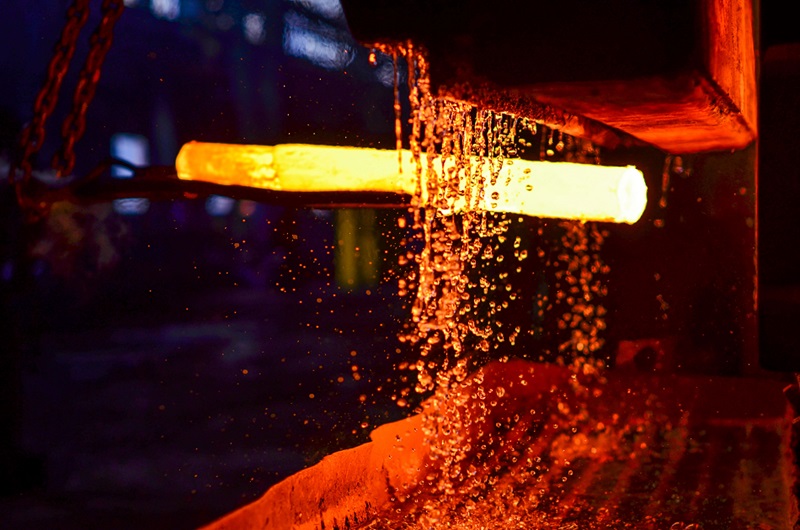Common Heat Treatment Methods

- Annealing
Annealing is the process of heating the metal beyond its upper critical temperature and then cooling it at a slow rate. This process softens the metal and makes it more suitable for cold working and forming. Furthermore, annealing enhances the material’s workability by increasing its toughness, reducing hardness, and improving ductility and machinability.
Metals tend to lose ductility or pliability while gaining yield strength after a certain amount of cold working. Annealing is necessary because it helps restore the metal’s original properties.
- Hardening
This is the most common heat treatment process. It is used to increase the hardness of a metal by heating it to a specific temperature and then cooling it rapidly by submerging it into a cooling medium. The cooling medium could be oil, water, or brine. After submersion, the material would have increased hardness and strength, but the brittleness would increase, too.
Hardening can help reduce the potential for cracking along the surface of a metal. Since you can reverse the process, the strength is easily measured, making it possible to choose a suitable material.
- Aging
Also called precipitation hardening, aging is a heat treatment used to increase a material’s yield strength. It produces uniformly dispersed particles in a grain’s structure, changing the material’s properties. Precipitation hardening usually comes after a heat treatment process has reached hotter temperatures. Aging only raises the temperature to medium levels and quickly brings it down.
The aging of materials may differ. Some materials may age naturally at room temperature, while others age artificially at elevated temperatures.
- Normalizing
This type of heat treatment relieves a material of its internal stresses caused by different processes, such as quenching, casting, and welding. During normalizing, the metal is heated to a temperature that’s 40°C above its upper critical temperature. The material is then cooled using air after it holds the upper critical temperature for a period.
Materials that have been normalized are harder and stronger than those annealed. In fact, steel is tougher when normalized than in any other condition.
- Stress relieving
Stress relieving is a heat treatment process wherein metal is subjected to a constant temperature below its critical temperature, followed by controlled cooling. Materials also need stress relief because drawing, forming, machining, and other procedures induce stress. These stresses, when not addressed, can cause loss of tolerance, distortion, cracking, and in-service failures.
- Tempering
This heat treatment process reduces excess hardness and relieves internal stresses. Tempering is vital to metallurgy because, without it, the workpiece becomes more prone to brittleness when there is excess hardness in a material. By doing this, a metal becomes suitable for many applications.
- Carburization
This process is one of the most common heat treatments. Carburization involves the absorption of carbon into steel or metal alloy during operation in high temperatures typically above 593°C. Carbon enters the material by diffusion and causes the metal to become embrittle and lose toughness and creep resistance.
Know Your Heat Treatment Processes
Heat treatment is a very particular method that requires the right conditions to produce quality metal products. Moreover, it takes a great deal of expertise, experience, and tools to help you achieve excellent materials.
If you’re looking for a company that offers a wide selection of heat treatment furnaces for your business, AI Furnaces supplies expert-made furnaces for your tailoring. Contact us today for inquiries.